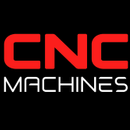Exploring CNC Lasers: Fiber vs. CO2, Historical Evolution, and Future Prospects

CNC Lasers: Fiber vs. CO2, Historical Evolution, and Future Prospects
CNC (Computer Numerical Control) lasers are pivotal in modern manufacturing, offering unmatched precision in cutting and engraving a variety of materials. Among the most prominent types are Fiber and CO2 lasers, each with unique capabilities and applications. This article delves into the differences between these lasers, their historical development, key manufacturers, technological advancements, and the future of laser technology.
Understanding CNC Fiber and CO2 Lasers
CNC Fiber Laser
Fiber lasers use a solid-state laser made from a 'seed laser'—a laser beam amplified through special glass fibers. This process is enhanced by pump diodes, resulting in a laser beam that is both more precise and energy-efficient than those produced by other types of lasers.
- Applications: Primarily used for cutting thin to medium-thick metal sheets. Ideal for stainless steel, aluminum, brass, and copper.
- Advantages: Higher cutting speed, greater energy efficiency, and lower maintenance due to the lack of moving parts in the laser generation process.
- Limitations: Less effective on thicker materials and some non-metal materials.
CO2 Laser
These lasers use a gas mixture (containing Carbon Dioxide) stimulated electrically to produce a laser beam. CO2 lasers are versatile and can cut and engrave a wider range of materials with high precision.
- Applications: Effective in cutting non-metal materials like wood, acrylic, leather, fabric, and also metals when enhanced with oxygen assist.
- Advantages: Excellent in handling a diverse range of materials and thicknesses, providing smooth, clean cuts.
- Limitations: Higher operational costs and energy consumption compared to fiber lasers.
Historical Timeline and Evolution of CNC Lasers
- 1960s: The first laser, a ruby laser, was invented by Theodore Maiman in 1960. CO2 lasers were developed shortly after, marking the beginning of laser use in industrial applications.
- 1970s: The adaptation of lasers for cutting materials began, initially with non-metals and later metals as laser power increased.
- 1980s: Fiber lasers were introduced, offering new possibilities in terms of energy efficiency and precision.
- 1990s to Present: Innovations in laser technology have focused on increasing power, efficiency, and adaptability, making lasers suitable for a wide range of industrial applications.
Major CNC Laser Manufacturers
Some of the leading companies in the CNC laser manufacturing industry include:
- Trumpf: A dominant player in the manufacturing of industrial lasers and laser systems for cutting, welding, and laser surface treatment.
- Amada: Known for their precision sheet metal fabrication machines, including CO2 and fiber laser cutters.
- Bystronic: Specializes in high-quality laser cutting systems that are highly energy efficient.
Patents Supporting CNC Laser Technology
Numerous patents have been filed over the years to protect innovations in CNC laser technology. These patents cover aspects such as laser control methods, cutting head designs, methods for reducing energy consumption, and improvements in laser efficiency and safety. The ongoing filing of patents demonstrates the competitive and rapidly evolving nature of this technology.
The Speed of Laser Technology and Future Prospects
Speed Enhancements
Modern CNC lasers can cut materials at speeds of several meters per minute, depending on the material thickness and laser power. Fiber lasers, in particular, are celebrated for their speed and efficiency in cutting thin metals.
Future of CNC Lasers
- Automation and AI Integration: Future advancements are likely to integrate more artificial intelligence and automation in laser cutting processes, enhancing precision and reducing human error.
- Green Technology: As sustainability becomes crucial, the development of more energy-efficient and environmentally friendly laser systems is expected.
- Material Innovations: Research into handling more diverse and complex materials at greater thicknesses and speeds.
Conclusion
The choice between a CNC fiber laser and a CO2 laser depends largely on the specific needs of the application, considering factors like material type, thickness, and desired outcome. As technology continues to evolve, the capabilities of CNC lasers are expected to expand, opening new avenues for innovation in manufacturing. With major manufacturers pushing the boundaries of what's possible and ongoing research into more efficient and versatile laser systems, the future of CNC lasers looks both bright and promising.


